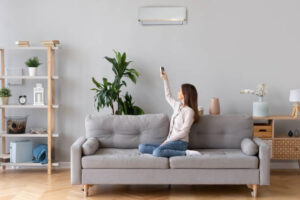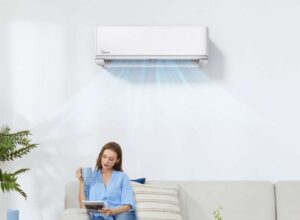IAQ standards might seem like just another set of regulations in the vast landscape of environmental and health guidelines. Yet, they carve out a significant niche with their critical role in safeguarding indoor air quality. This unique focus sets them apart, offering a distinct framework that positions IAQ standards as a pivotal category in public health and safety.
Key components of IAQ standards include ventilation requirements, pollutant level limits, and conditions for temperature and humidity, each known for their specific impact on creating healthier indoor environments. Single aspects like carbon monoxide levels or particulate matter concentrations stand out, providing clear targets for maintaining air quality. Digging a bit deeper, each component of IAQ standards reveals its own set of challenges, benefits, implementation strategies, and impact on human health.
The following sections will delve into these aspects in detail, providing a comprehensive understanding of why IAQ standards are crucial for our well-being and how they contribute to making indoor spaces safer for everyone.
What are IAQ standards?

IAQ standards, established by the Environmental Protection Agency (EPA), serve as the backbone for ensuring that the air within our homes, offices, and public spaces remains clean and conducive to good health. These guidelines are meticulously crafted to manage and minimize the presence of indoor pollutants, which can range from common allergens to harmful chemical compounds. At their core, IAQ standards address a variety of criteria, such as ventilation rates for fresh air circulation and maximum contaminant levels for pollutants.
These standards are not just numbers pulled from thin air; they are based on extensive scientific research and reflect public health guidelines. Their ultimate goal is to shield us from the adverse health effects linked to poor indoor air quality, including respiratory conditions and other ailments. By laying down clear parameters for what constitutes safe indoor air, IAQ standards empower homeowners, businesses, and health officials to take actionable steps toward maintaining environments that are not just comfortable, but also healthy to live and work in.
Why are IAQ standards important?
IAQ standards are vital for several reasons, all of which converge on the central goal of safeguarding our health. Firstly, they protect health from pollutants by setting limits on harmful substances in the air we breathe indoors. This is crucial in preventing respiratory conditions and other health issues that can arise from exposure to poor air quality.
Moreover, IAQ standards are key to improving comfort and productivity in indoor environments. Whether at home, work, or school, clean air contributes to a more comfortable and productive setting, enhancing overall well-being and efficiency. Lastly, these standards ensure legal and regulatory compliance.
Adhering to IAQ guidelines helps businesses and property owners meet legal obligations and avoid penalties, making it an essential practice for maintaining healthy and lawful operations. In essence, IAQ standards are not just guidelines but essential measures for creating safer, healthier, and more productive spaces, highlighting their importance in our daily lives.
Protect health from pollutants
IAQ standards play a pivotal role in shielding our health from the adverse effects of indoor pollutants. By setting stringent limits for airborne contaminants like mold, dust, and chemical vapors, these standards aim to ward off health issues such as asthma, allergies, and respiratory conditions. Ensuring the air we breathe indoors is free from harmful pollutants is crucial for maintaining our health, particularly in spaces where we spend a considerable amount of our time.
Improve comfort and productivity
Clean, fresh air is a cornerstone of both comfort and productivity in indoor environments. IAQ standards enhance the quality of indoor spaces by ensuring adequate ventilation and maintaining optimal humidity levels. This creates a more comfortable atmosphere, making it easier for people to focus and be productive.
Whether it’s in the workplace, at school, or at home, improved air quality can significantly boost our overall well-being and performance.
Ensure legal and regulatory compliance
Compliance with IAQ standards is a key aspect of meeting legal and regulatory obligations related to environmental health and safety. For businesses and property owners, adhering to these standards is essential to avoid potential legal repercussions, fines, and reputational damage. It reflects a commitment to the health and safety of occupants, which is critical for the successful operation of businesses and the well-being of residents in homes and other living spaces.
How are IAQ standards determined?
IAQ standards are the result of comprehensive scientific research and a deep understanding of public health needs. Experts in the field assess the impact of various pollutants on human health to set guidelines that ensure indoor air quality is within safe limits. These standards are closely aligned with public health guidelines, making sure they are up-to-date with the latest health and safety recommendations.
Factors such as ventilation rates and maximum contaminant levels are meticulously considered to foster environments that are not just safe, but also conducive to the well-being of their occupants. This methodical approach ensures that IAQ standards remain effective and relevant, providing a solid foundation for healthy indoor living and working spaces.
Based on scientific research
The development of IAQ standards is deeply rooted in scientific research. This involves a thorough examination of how various indoor pollutants affect human health, allowing experts to establish safe exposure levels. Research spans the study of physical, chemical, and biological contaminants and their impact on well-being.
By leveraging scientific evidence, IAQ standards provide a robust framework designed to protect individuals from the adverse effects of poor indoor air quality.
Reflecting public health guidelines
IAQ standards are closely aligned with public health guidelines, ensuring they embody the most current health and safety practices. These standards incorporate recommendations from leading health authorities, reflecting the collective wisdom on protecting public health in indoor environments. By mirroring these guidelines, IAQ standards play a pivotal role in promoting environments that are not only safe but also conducive to the health and well-being of occupants.
What are the key components of IAQ standards?

The foundation of IAQ standards rests on three pillars: ventilation, contaminant control, and climate management. Ventilation rates are essential for bringing fresh air into indoor spaces, effectively reducing the concentration of indoor pollutants. Maximum contaminant levels for pollutants are set to safeguard occupants from exposure to harmful substances, including volatile organic compounds (VOCs) and particulate matter.
Additionally, guidelines for temperature and humidity play a critical role in ensuring comfort and preventing the proliferation of mold and allergens. Together, these components underscore the comprehensive approach of IAQ standards to promote health and safety in indoor environments.
Ventilation rates for fresh air
Ventilation rates stand at the forefront of IAQ standards, emphasizing the importance of circulating fresh air within indoor spaces. This circulation is essential for diluting and evacuating pollutants, ensuring a continuous supply of clean air. Effective ventilation is pivotal in preventing the accumulation of indoor air contaminants, thereby safeguarding the health of occupants and enhancing the overall air quality.
Maximum contaminant levels for pollutants
The establishment of maximum contaminant levels is a critical component of IAQ standards, designed to protect occupants from the adverse effects of air pollutants. These thresholds are meticulously set for a wide range of pollutants, including chemical compounds, particulate matter, and biological agents, to minimize exposure and mitigate health risks associated with poor indoor air quality.
Guidelines for temperature and humidity
Guidelines for temperature and humidity within IAQ standards aim to create environments that are not only comfortable but also conducive to good health. Proper management of these elements is vital for maintaining optimal air quality, as extremes in temperature and humidity can facilitate the growth of mold, dust mites, and other allergens. By adhering to these guidelines, indoor spaces can achieve a balance that promotes well-being and prevents the proliferation of harmful contaminants.
Who enforces IAQ standards?
The responsibility for enforcing IAQ standards is shared by two pivotal organizations: the Environmental Protection Agency (EPA) and the Occupational Safety and Health Administration (OSHA). The EPA sets the stage by developing comprehensive guidelines and regulations aimed at minimizing health risks associated with indoor air pollution for the general public. Meanwhile, OSHA focuses on the workplace, ensuring that employers adhere to specific air quality standards to protect employees’ health and safety.
Together, these agencies play a critical role in upholding IAQ standards, making indoor environments safer and healthier for everyone involved.
Environmental Protection Agency (EPA)
The Environmental Protection Agency (EPA) stands at the forefront of the battle against indoor air pollution, playing a crucial role in the enforcement of IAQ standards. Through its comprehensive research and regulatory efforts, the EPA establishes guidelines that aim to mitigate the health risks associated with poor indoor air quality. By providing essential resources, guidance, and support, the EPA empowers homeowners, businesses, and local governments to significantly improve the air quality within their environments, ensuring safer, healthier spaces for the public.
Occupational Safety and Health Administration (OSHA)
The Occupational Safety and Health Administration (OSHA) is dedicated to ensuring that workplaces across the nation adhere to strict air quality standards. By setting and enforcing regulations that demand safe and healthy working conditions, OSHA directly impacts the well-being of employees. Through its rigorous inspection processes and the imposition of penalties for non-compliance, OSHA underscores the importance of maintaining optimal indoor air quality in the workplace, and safeguarding workers from the potential hazards of polluted indoor environments.
How can compliance with IAQ standards be achieved?

Compliance with IAQ standards can be effectively achieved through a comprehensive strategy that includes regular air quality testing, maintenance and inspection of HVAC systems, and the installation of air purifiers and high-efficiency filters. Conducting periodic air quality assessments is crucial for identifying the presence and concentration of indoor pollutants. This information allows for targeted actions to improve air quality.
Proper upkeep and inspection of HVAC systems ensure they operate efficiently, preventing the circulation of contaminants. Moreover, integrating air purifiers and high-efficiency filters into indoor spaces can significantly lower pollutant levels, creating healthier environments. Together, these measures form a robust approach to meeting IAQ standards, safeguarding the health and well-being of occupants.
Implementing regular air quality testing
Implementing regular air quality testing is a cornerstone in upholding IAQ standards. This involves the systematic measurement of pollutant levels within indoor environments, enabling the early detection of air quality issues. Such proactive indoor air quality monitoring facilitates timely corrective actions, whether it’s enhancing ventilation or addressing specific contamination sources, thereby ensuring the air remains healthy and safe for occupants.
Maintenance and inspection of HVAC systems
Maintenance and regular inspection of HVAC systems play a pivotal role in maintaining optimal indoor air quality. These systems, when properly cared for, act as the lungs of indoor spaces, filtering out pollutants and circulating clean air. Routine inspections help identify and rectify any inefficiencies or faults, preventing pollutant buildup and ensuring the system’s positive contribution to indoor air quality.
Installation of air purifiers and high-efficiency filters
The installation of air purifiers and high-efficiency filters is a powerful strategy for improving indoor air quality and meeting IAQ standards. Air purifiers target a wide range of airborne contaminants, including fine particulates and allergens, effectively reducing their presence in indoor spaces. Incorporating high-efficiency filters into HVAC systems further captures pollutants, offering a comprehensive approach to purifying indoor air and fostering a healthier environment.
What are the challenges in meeting IAQ standards?
Meeting IAQ standards comes with its set of challenges, including financial burdens, regulatory complexity, and the need for enhanced awareness. For small businesses and property owners, the costs associated with upgrading HVAC systems, conducting regular air quality testing, and installing air purifiers can be substantial. Navigating the maze of regional regulations adds another layer of complexity, as these standards can vary greatly from one jurisdiction to another, making compliance a moving target.
Moreover, raising public and employee awareness about the significance of indoor air quality and the steps required to improve it is an ongoing endeavor. These challenges highlight the multifaceted nature of achieving and maintaining optimal indoor air quality.
Adapting to region-specific regulations
Navigating the complexity of region-specific regulations presents a significant challenge in adhering to IAQ standards. The landscape of indoor air quality regulations is marked by a diverse array of requirements that can vary dramatically from one region to another. This diversity demands that businesses and property owners remain vigilant and adaptable, tailoring their compliance strategies to align with the specific legal frameworks of their locales.
Financial burden on small businesses
The financial burden associated with meeting IAQ standards disproportionately impacts small businesses. The costs involved in upgrading HVAC systems, performing regular air quality assessments, and implementing other air quality improvements can be prohibitive. Small businesses, with their limited financial resources, may find it particularly challenging to balance the imperative of compliance against the backdrop of their overall financial management.
Public and employee awareness and education
Raising public and employee awareness about the importance of IAQ standards is crucial yet challenging. Educating individuals about the health implications of indoor air quality and the necessary preventive measures requires a concerted effort. Despite the importance of this education, effectively engaging and informing a wide audience about these issues often encounters obstacles, including indifference or resistance to change, underscoring the need for persistent and innovative awareness-raising strategies.
How do IAQ standards vary globally?
Globally, IAQ standards demonstrate significant diversity, shaped by varying regulatory frameworks, environmental conditions, and public health priorities. In some regions, stringent and comprehensive guidelines are in place, reflecting a strong commitment to safeguarding indoor air quality. In contrast, other areas may have less developed standards, influenced by factors such as economic constraints and levels of technological advancement.
The approach to enforcement and compliance further diversifies the global landscape of IAQ standards, with some countries employing robust mechanisms while others may lack the resources or infrastructure for effective enforcement. This variance highlights the complexity of addressing indoor air quality on a global scale and underscores the necessity of navigating local regulations with precision.
Differences in regulatory frameworks
The differences in regulatory frameworks for IAQ standards are marked by diverse legislative landscapes and policy priorities across the globe. Each country’s approach to regulating indoor air quality is influenced by a variety of factors, including public health imperatives, environmental sustainability goals, and economic considerations. As a result, the rigor and scope of IAQ regulations can vary significantly from one region to another, with some countries implementing stringent standards and others adopting more lenient or less detailed guidelines.
This variance underscores the complex interplay between policy, health, and environmental factors in shaping IAQ standards worldwide.
Variation in enforcement and compliance mechanisms
The variation in enforcement and compliance mechanisms for IAQ standards highlights a significant global disparity. While some countries have established strong enforcement frameworks, complete with regular monitoring, penalties for non-compliance, and transparent reporting systems, others struggle with limited resources, inadequate infrastructure, or a lack of political support for stringent enforcement. This inconsistency not only impacts the effectiveness of IAQ regulations but also influences their capacity to protect public health and ensure environmental quality across different jurisdictions.
What is the future of IAQ standards?

The future of IAQ standards is set to unfold against a backdrop of increasing awareness and technological innovation. Anticipated to become more comprehensive, future standards will likely address a broader spectrum of pollutants, including those emanating from new materials and emerging technologies. The advent of smart building technologies holds the promise of revolutionizing how indoor air quality is monitored and managed, enabling more precise and effective compliance with IAQ standards.
Moreover, a growing focus on sustainability and green building practices suggests that future standards will not only safeguard human health but also emphasize environmental preservation. These developments point towards a future where IAQ standards are characterized by greater inclusivity, advanced technological integration, and a reinforced commitment to both public health and environmental sustainability.
Incorporation of emerging pollutants
The incorporation of emerging pollutants into IAQ standards marks a critical evolution in the quest to safeguard indoor air quality. As our environments become increasingly saturated with new materials and technologies, they introduce a spectrum of previously unrecognized contaminants. Addressing these emerging pollutants within IAQ standards is essential for ensuring that these guidelines continue to provide comprehensive protection against a broadening array of indoor air quality threats, thereby upholding public health in an ever-changing world.
Integration with smart building technologies
The integration with smart building technologies is poised to revolutionize the enforcement and management of IAQ standards. By harnessing the power of real-time data collection and automated system adjustments, these technologies enable a more dynamic approach to maintaining optimal indoor air conditions. Smart sensors and IoT devices can continuously monitor air quality parameters, adjusting HVAC operations on the fly to meet IAQ requirements.
This seamless integration promises not only to enhance compliance but also to elevate occupant well-being through more personalized and responsive indoor environments.
Emphasis on sustainable and green building practices
An emphasis on sustainable and green building practices is increasingly shaping the future of IAQ standards. This trend reflects a growing recognition of the interconnectedness between indoor air quality, environmental sustainability, and public health. Future IAQ standards are expected to prioritize measures that not only ensure the health and safety of building occupants but also promote environmental stewardship.
By incorporating sustainability criteria—such as energy efficiency, low-emission materials, and resource conservation—into IAQ standards, the path forward aims to create buildings that are as beneficial for the planet as they are for the people who inhabit them.
